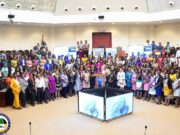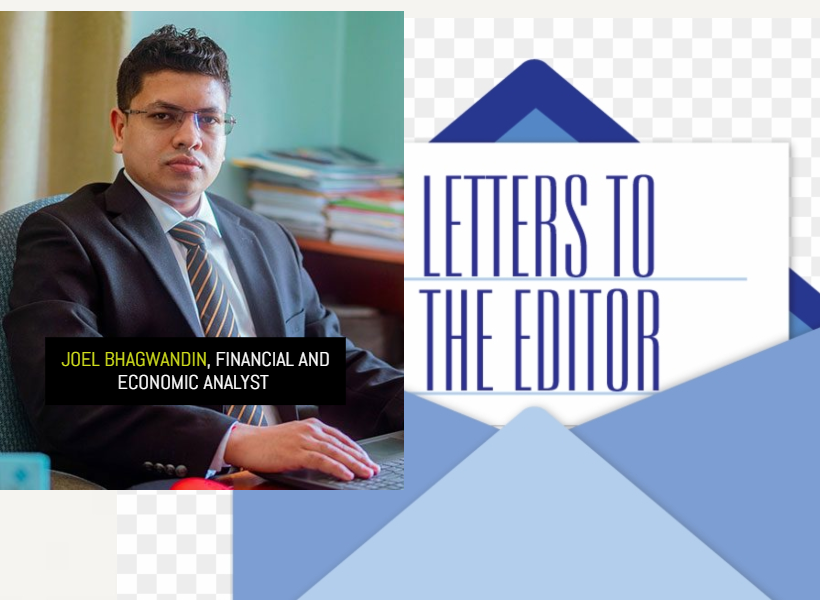Dear Editor,
In a Kaieteur News editorial dated March 15, 2024, the argument was put forward that the press is under attack. Specifically, reference was made to Vice President, Dr. Bharrat Jagdeo’s weekly press conference where he consistently responds to distorted reports, misinformation, misinterpretation, and false reporting on subject matters of public interest.
Contrary to the editorial’s contentions, however, the government has a right to defend its policies, decisions, distortions, and false reporting in the press. This approach by the government cannot by any measure of ethical standard be equated to attacking the press that the aforesaid media entity would like its readers to believe. In fact, the media in general enjoys a free pass, to the extent that press freedom is prostituted in a way that some of the independent media entities are allowed to report all sorts of falsehoods without being held accountable. And, more so, they do not subject themselves to any form of accountability and/or ethical standards altogether. For example, there are many instances wherein certain media entities do not, or rarely if at all, fact check reports before publishing, and often they do not publish responses/rebuttals to other writers whom they facilitate. Yet, some of these media entities believe that they are a sacrosanct fraternity (sarcasm intended), that no one should question and interrogate the veracity, correctness, and authenticity of their reporting. Unfortunately, in the democratic world it does not work like that.
Another matter worth pointing out is that there is a growing acceptability of a new norm whereby the independent media facilitates editorials by anonymous guest editors, with the exception of a few media entities. If this is not an indication of cowardice on the part of the seemingly weakling anonymous authors, then what is. In other parts of the democratic world, the more upstanding and credible media entities publish the names and profiles of the authors who contribute to their “opinion editorials” (op-eds). So much for the credibility and integrity of the anonymous authors―and by extension the media entities, let alone the merits and substance of the contents of itself.
Then there are the so-called professors, the likes of Dr. Thomas Singh et.al, exhibiting similar symptoms of weakness and insecurities in relation to their own supposedly scholarly/academic work, and public commentaries on public policy.
There is a culture practiced by these professors who do not want to be challenged, let alone defend their positions and thesis. It begs the question how they obtained their PhDs and professorships if they are reluctant to, and consistently fail to robustly defend their own supposedly scholarly/academic work (normally, you have to defend your PhD thesis before conferred with same), and they view any such challenge as being disrespectful to them.
Only recently this author had an encounter with Dr. Thomas Singh (via an email exchange) following a public (virtual) presentation that he had participated in, titled: “…assessing Guyana’s Gas-to-Energy project (GtE)”. When asked to share his presentation, he was admittedly reluctant to do so. Notwithstanding his reluctance, he made the following conclusions:
i) That the use of Guyana’s significant gas resources for energy locks Guyana into a technology of the past;
ii) That it fails to take advantage of learning opportunities to achieve economic diversification;
iii) That it seems to ignore the fact that carbon pricing is happening, and that Guyana’s exports produced from natural gas may attract border adjustments;
iv) Guyana should not give up this opportunity to start a climate club of hydrocarbon developing countries that are embracing carbon pricing; and
v) That we should be re-thinking our economic philosophy, especially the size of government and its relation to the private sector and the freedom and agency individuals.
Based on the foregoing conclusions by Dr. Thomas Singh, this author then posed the following questions aimed at interrogating Dr. Singh’s positions, to which his response may never be forthcoming (taken verbatim from the email exchange):
i) When you say that the GtE locks Guyana into a technology of the past, what is the alternate technology we should be investing in for the future?
ii) Have you done any analysis, based on the current market rates for carbon pricing, to ascertain what may be the impact on the financial feasibility of the GtE?
iii) Have you considered that the global target for net-zero emissions is nowhere close to achieving those targets on time? There are major gaps thereto. For example:
a) The Generation Gap. In recent years, backed by subsidy schemes, tax credits, and a falling levelized cost of energy, the installation of renewable energy capacity has expanded tremendously. Globally, 1,282 gigawatts (GW) of renewable power capacity was added to the energy system between 2016 and 2021, and the International Energy Agency (IEA) projects that an additional 2,400 GW of renewable capacity will be installed in 2022 and 2027. However, if the world is to reach net zero by 2050, capacity will have to grow to more than 27,000 GW―an eightfold increase from 2021 levels.
b) The Grid Gap. Over the past decade, the world has invested an average of $300 billion per year. According to the IEA, annual investments will need to rise to the range of US$560 billion to US$780 billion in the 2030s.
c) The Storage Gap. Renewable energy tends to be intermittent (the sun doesn’t always shine, and the wind doesn’t always blow, while the demand for electricity is relatively constant and predictable). Hence, to have an orderly transition to a decarbonized grid, a significant amount of electricity storage capacity will be required, in the form of batteries or pumped hydropower schemes. Significant investments in grid-scale battery storage have been made. In 2022, globally, 16 GW of grid-skill battery storage was added. According to the IEA, to get on track with the net-zero targets, which would require a 143-fold increase by 2050, annual additions must pick up significantly to an average of more than 80 GW per year over the 2022 to 2030 period.
Altogether, the total funding gap needs to almost triple. To keep on track with net-zero emissions by 2050 goals, the IEA estimates that annual investment in clean energy will have to rise substantially from the projected 2023 level of US$1.8 trillion to US$4.6 trillion in 2030. With this in mind, bridging the energy transition gap is likely to remain a challenging task in meeting those targets to narrow the gap. Therefore, the global demand for fossil-fuel will continue to be strong for at least for the next 3 decades or another century.
iv) Did you consider the foregoing factors, together with carbon pricing as you have indicated, the impact thereof, and perform a demand analysis to justify your position?
These are just a few factors. There are many other variables to consider in the decision-making process, as opposed to a panel discussion on these issues in a very abstract manner.
I await Professor Thomas Singh’s defence of his thesis on the GtE project based on the aforementioned questions, which were posed to him by the undersigned via email.
Yours respectfully,
Joel Bhagwandin









